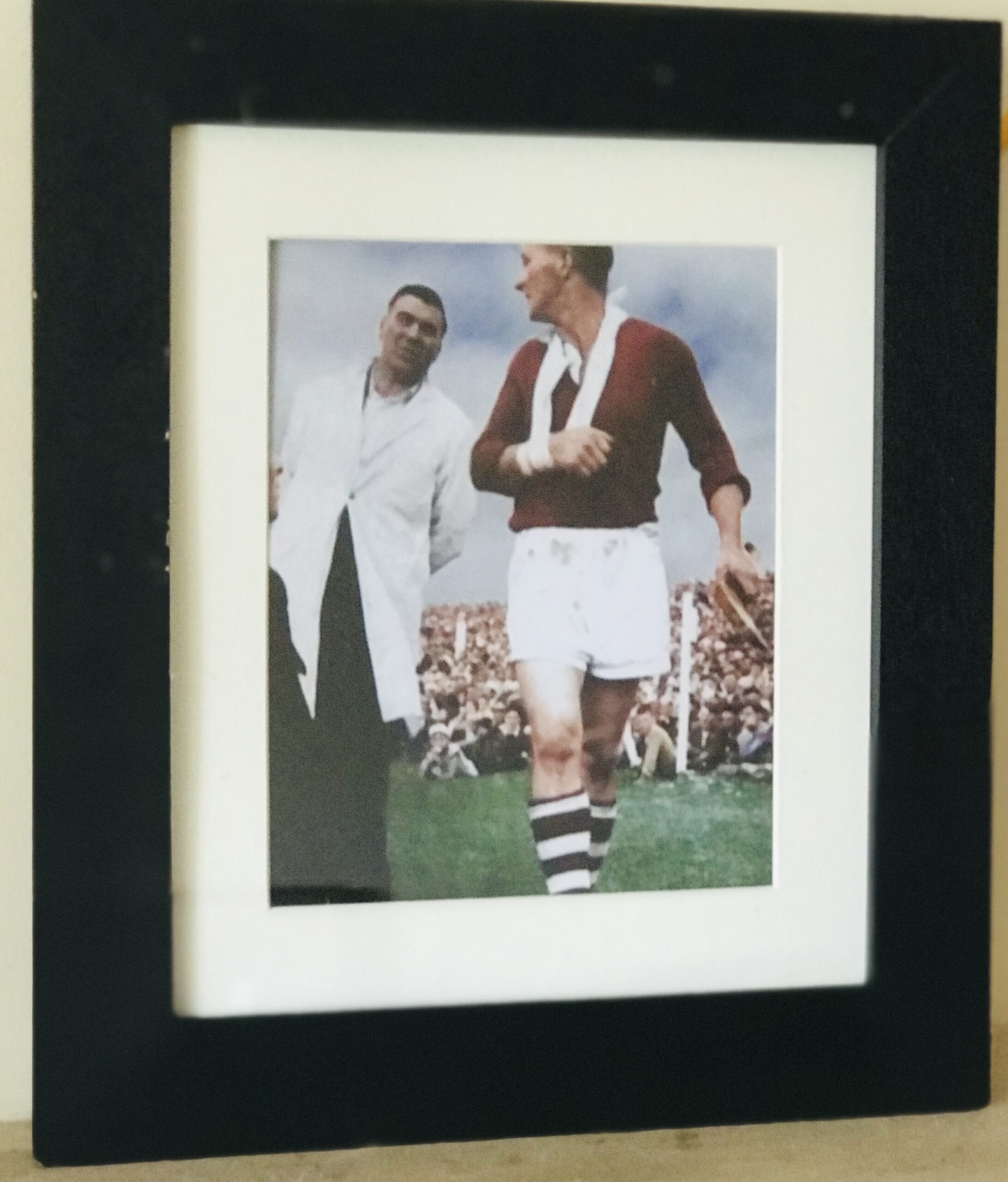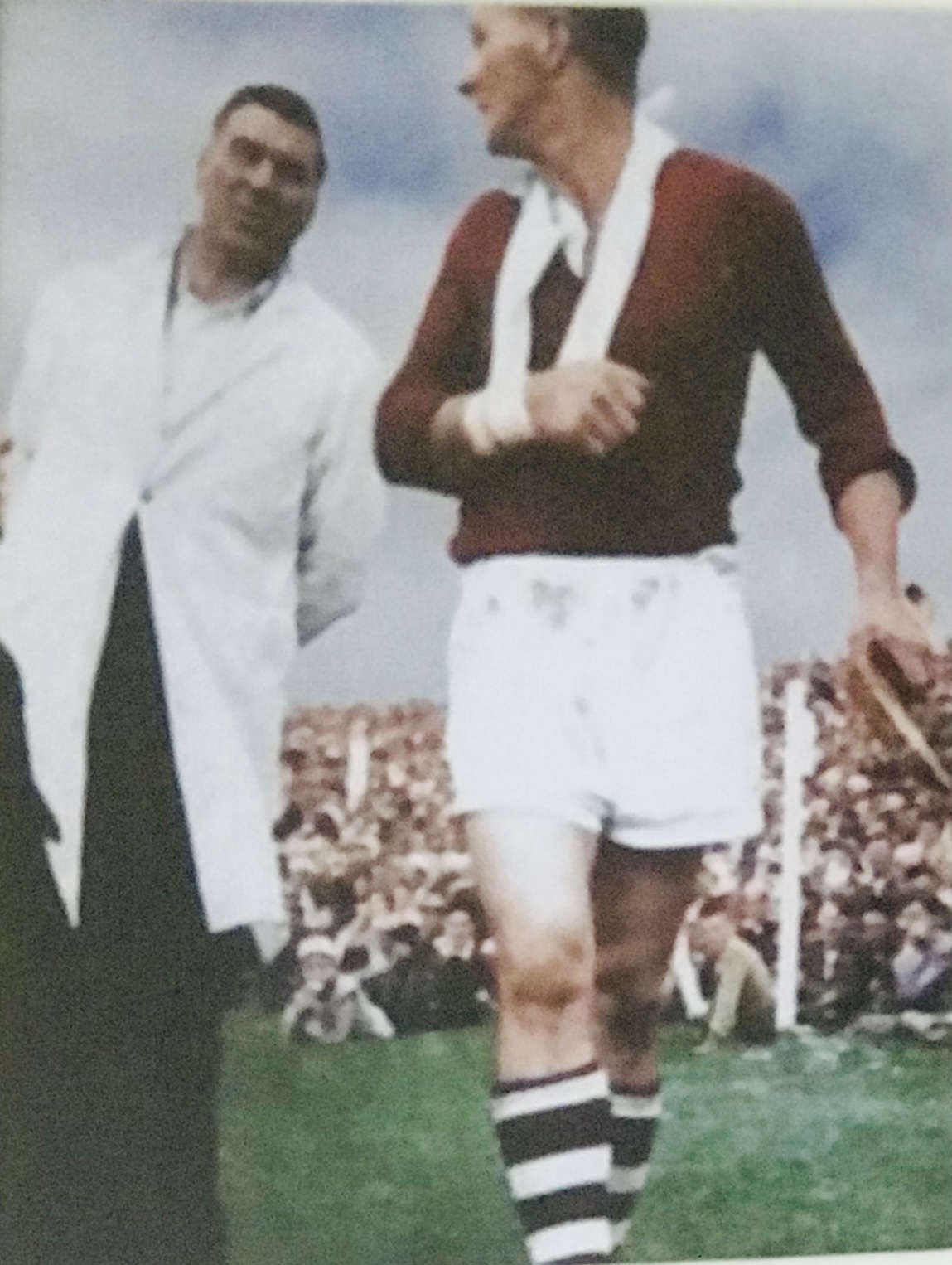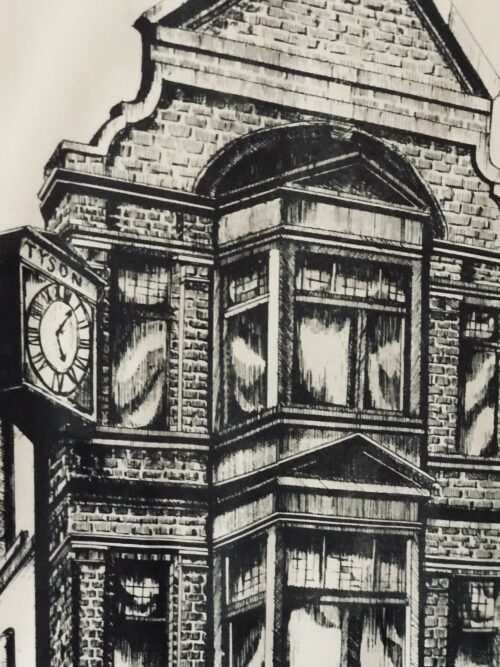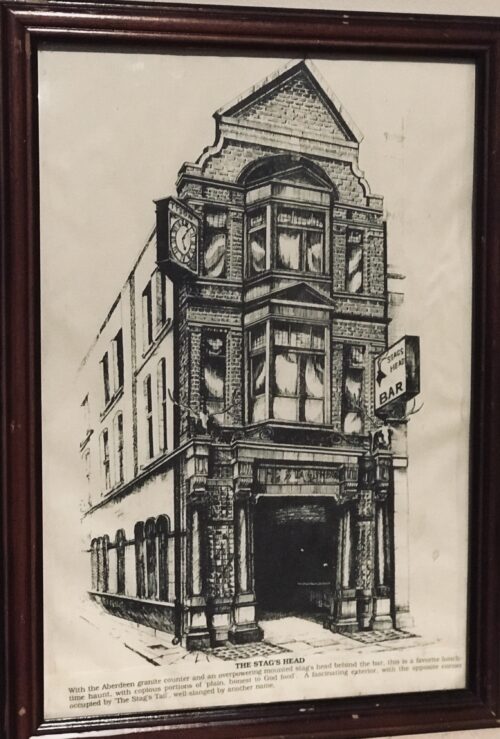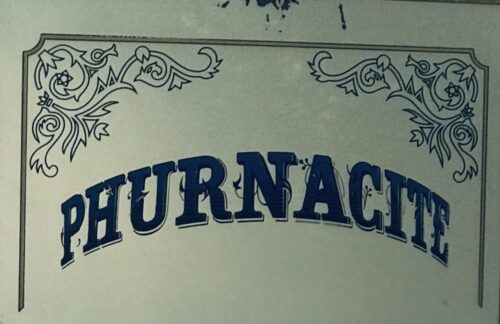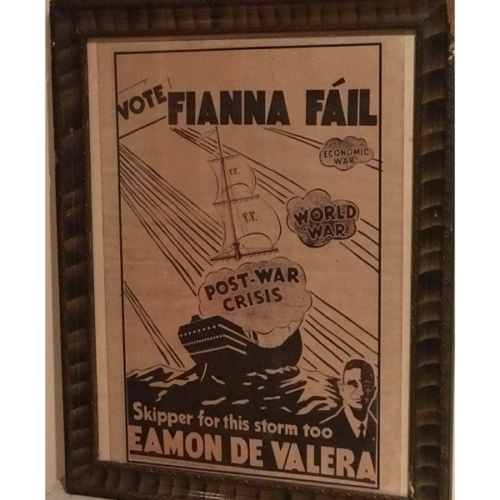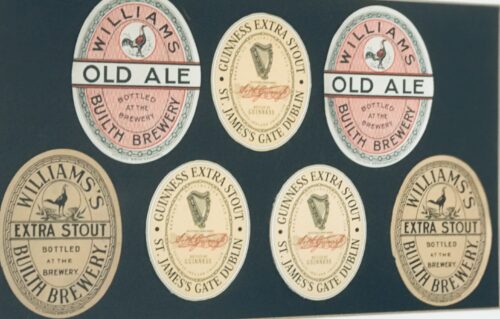38cm x 33cm
This time a colour version of the iconic photograph taken by Justin Nelson.The following explanation of the actual verbal exchange between the two legends comes from Michael Moynihan of the Examiner newspaper.
“When Christy Ring left the field of play injured in the 1957 Munster championship game between Cork and Waterford at Limerick, he strolled behind the goal, where he passed Mick Mackey, who was acting as umpire for the game. The two exchanged a few words as Ring made his way to the dressing-room.It was an encounter that would have been long forgotten if not for the photograph snapped at precisely the moment the two men met.
The picture freezes the moment forever: Mackey, though long retired, still vigorous, still dark haired, somehow incongruous in his umpire’s white coat, clearly hopping a ball; Ring at his fighting weight, his right wrist strapped, caught in the typical pose of a man fielding a remark coming over his shoulder and returning it with interest.
Two hurling eras intersect in the two men’s encounter: Limerick’s glory of the 30s, and Ring’s dominance of two subsequent decades.But nobody recorded what was said, and the mystery has echoed down the decades.But Dan Barrett has the answer.He forged a friendship with Ring from the usual raw materials. They had girls the same age, they both worked for oil companies, they didn’t live that far away from each other. And they had hurling in common.
We often chatted away at home about hurling,” says Barrett. “In general he wouldn’t criticise players, although he did say about one player for Cork, ‘if you put a whistle on the ball he might hear it’.”
Barrett saw Ring’s awareness of his whereabouts at first hand; even in the heat of a game he was conscious of every factor in his surroundings.
“We went up to see him one time in Thurles,” says Barrett. “Don’t forget, people would come from all over the country to see a game just for Ring, and the place was packed to the rafters – all along the sideline people were spilling in on the field.
“He came out to take a sideline cut at one stage and we were all roaring at him – ‘Go on Ring’, the usual – and he looked up into the crowd, the blue eyes, and he looked right at me.
“The following day in work he called in and we were having a chat, and I said ‘if you caught that sideline yesterday, you’d have driven it up to the Devil’s Bit.’
“There was another chap there who said about me, ‘With all his talk he probably wasn’t there at all’. ‘He was there alright,’ said Ring. ‘He was over in the corner of the stand’. He picked me out in the crowd.”
“He told me there was no way he’d come on the team as a sub. I remember then when Cork beat Tipperary in the Munster championship for the first time in a long time, there was a helicopter landed near the ground, the Cork crowd were saying ‘here’s Ring’ to rise the Tipp crowd.
“I saw his last goal, for the Glen against Blackrock. He collided with a Blackrock man and he took his shot, it wasn’t a hard one, but the keeper put his hurley down and it hopped over his stick.”
There were tough days against Tipperary – Ring took off his shirt one Monday to show his friends the bruising across his back from one Tipp defender who had a special knack of letting the Corkman out ahead in order to punish him with his stick. But Ring added that when a disagreement at a Railway Cup game with Leinster became physical, all of Tipperary piled in to back him up.
One evening the talk turned to the photograph. Barrett packed the audience – “I had my wife there as a witness,” – and asked Ring the burning question: what had Mackey said to him?
“’You didn’t get half enough of it’, said Mackey. ‘I’d expect nothing different from you,’ said Ring. “That was what was said.”
You might argue – with some credibility – that learning what was said by the two men removes some of the force of the photograph; that if you remained in ignorance you’d be free to project your own hypothetical dialogue on the freeze-frame meeting of the two men.
But nothing trumps actuality. The exchange carries a double authenticity: the pungency of slagging from one corner and the weariness of riposte from the other.
Dan Barrett just wanted to set the record straight.
“I’d heard people say ‘it will never be known’ and so on,” he says.“I thought it was no harm to let people know.”
No harm at all”
Origins ; Co Limerick
Dimensions : 31cm x 25cm 1kg
Born in Castleconnell, County Limerick,Mick Mackey first arrived on the inter-county scene at the age of seventeen when he first linked up with the Limerick minor team, before later lining out with the junior side. He made his senior debut in the 1930–31 National League. Mackey went on to play a key part for Limerick during a golden age for the team, and won three All-Ireland medals, five Munster medals and five National Hurling League medals. An All-Ireland runner-up on two occasions, Mackey also captained the team to two All-Ireland victories.
His brother, John Mackey, also shared in these victories while his father, “Tyler” Mackey was a one-time All-Ireland runner-up with Limerick.
Mackey represented the Munster inter-provincial team for twelve years, winning eight Railway Cup medals during that period. At club level he won fifteen championship medals with Ahane.
Throughout his inter-county career, Mackey made 42 championship appearances for Limerick. His retirement came following the conclusion of the 1947 championship.
In retirement from playing, Mackey became involved in team management and coaching. As trainer of the Limerick senior team in 1955, he guided them to Munster victory. He also served as a selector on various occasions with both Limerick and Munster. Mackey also served as a referee.
Mackey is widely regarded as one of the greatest hurlers in the history of the game. He was the inaugural recipient of the All-Time All-Star Award. He has been repeatedly voted onto teams made up of the sport’s greats, including at centre-forward on the Hurling Team of the Centuryin 1984 and the Hurling Team of the Millennium in 2000.
Origins : Co Limerick
Dimensions : 28cm x 37cm 1kg

